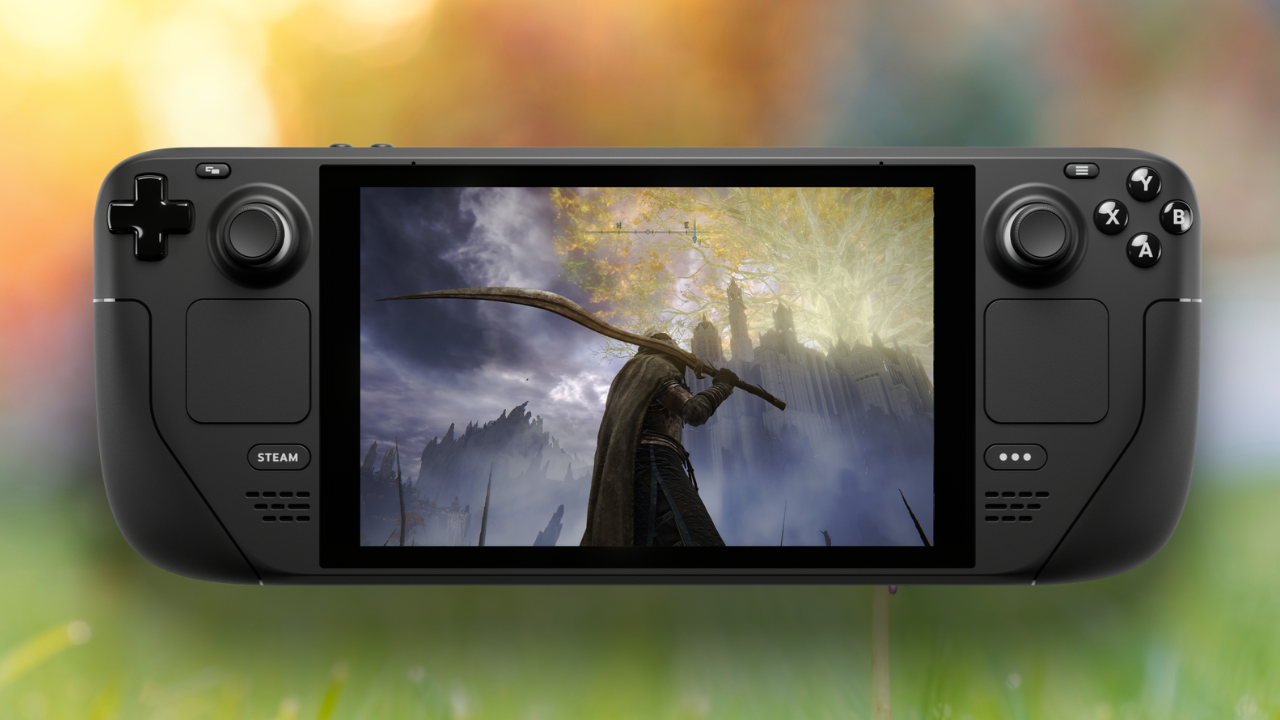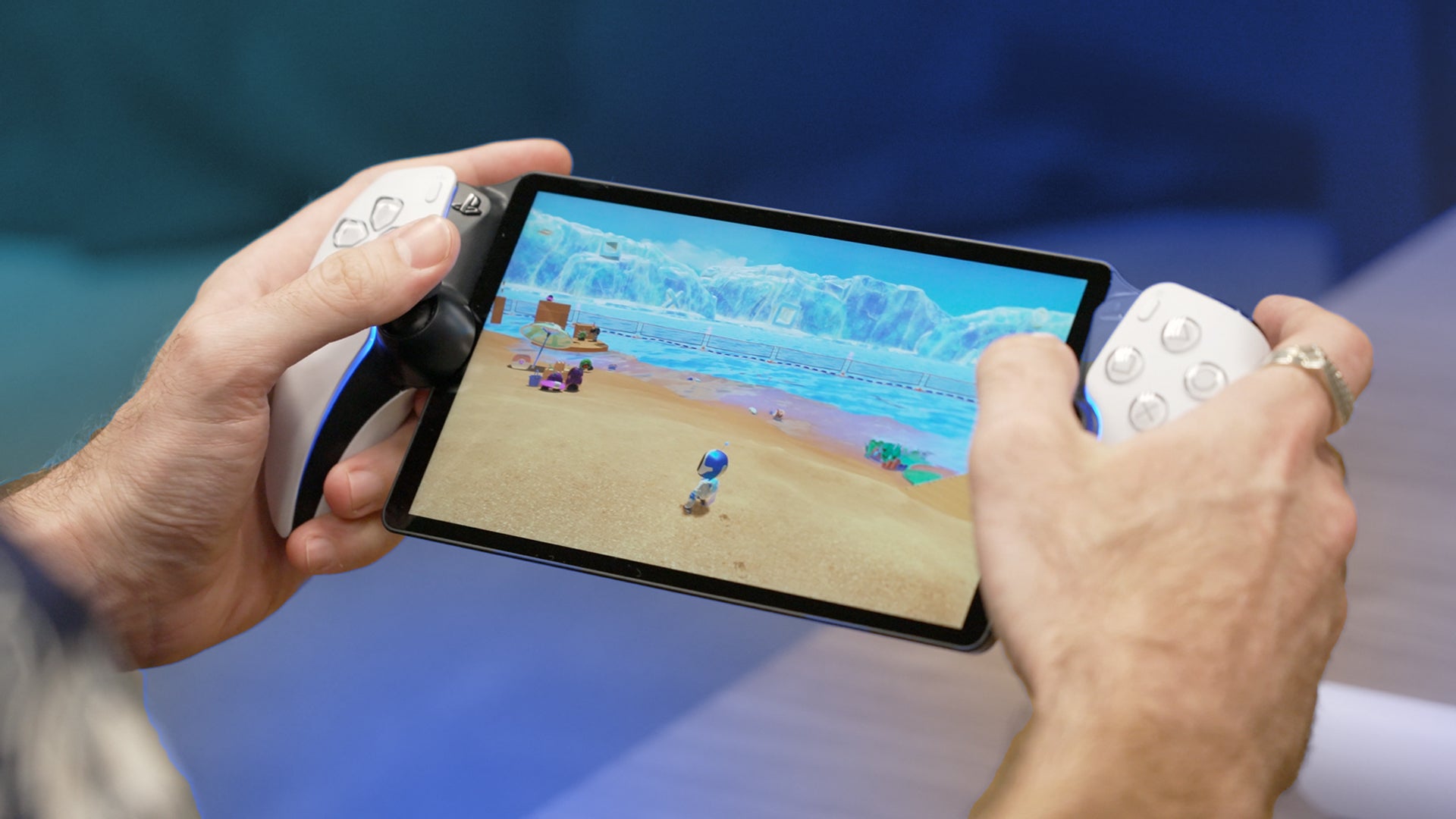Now that we finally know more about the Playstation Portal, which was revealed back we thought it would be the perfect time to take a look at how it compares to the extremely popular Steam Deck.
In short, the two devices serve completely different purposes. While you can stream games from your gaming PC to the Steam Deck, the Steam Deck also allows you to install and run games natively, which is something the Playstation Portal can't do. That's the biggest difference between the two devices. There are plenty of people who use the Steam Deck as their primary way to play games via Steam. That literally cannot be the case for the Playstation Portal.
As such, the Playstation Portal is quite a bit cheaper, should probably have longer batter life, and has a higher resolution display. But that might not be worth it if you don't want to invest a couple hundred dollars into a secondary device for your gaming setup.

With its starting configuration, the Steam Deck is going to cost you $399. That gets you the same CPU and GPU as any other Steam Deck, but with just 64GB of eMMC storage – which is most often found in Chromebooks. You can upgrade to a 256GB NVMe SSD, which is much faster, for $529; or you can upgrade to a 512GB SSD with a beautiful anti-glare screen for $649.
The PlayStation Portal, on the other hand, launches for a much lower $199. This is because while it does have a significantly higher resolution display (and a bigger display) than the Steam Deck, it doesn't have the powerful innards that allow Valve's handheld to run games all on its own. However, there's a bit of a catch. Because the Playstation Portal doesn't support Bluetooth, as most devices in 2023 should, you may have to fork out some extra cash to buy new peripherals that use Sony's new "PlayStation Link" wireless standard.
The two devices vary wildly in price, with the Steam Deck costing twice as much as the PlayStation Portal to start. But that's just because the Steam Deck can do a lot of stuff that Sony's new handheld just can't do.

The Steam Deck is powered by an AMD APU, or accelerated processing unit. These typically combine a CPU and a GPU in a single die to save space and make a device consume less power. The CPU is a Zen 2 chiplet with 4 cores, 8 threads and a turbo speed up to 3.5GHz. That CPU is paired with an RDNA 2 CU – which is the same generation as the AMD Radeon RX 6800 XT – with 8 compute units, making for a total of 1.6 Teraflops of potential compute performance.
Basically, the Steam Deck is able to play most current generation games, though at much lower settings than one of the best gaming laptops would allow. That's probably why it's best that it uses the 720p LCD display it does, as it doesn't ask gamers to shoot for a resolution they probably won't be able to hit anyways.
As for the PlayStation Portal, Sony hasn't released the specs for the device, and it's likely it never will. But because most of the heavy lifting will be done via the PS5 console rather than natively on the Portal, it doesn't need especially powerful hardware. In fact, because it doesn't look like the PlayStation Portal even comes with a calculator, much less Android apps, it will probably be running on even weaker hardware than other streaming handhelds like the Razer Edge.
By its very nature, the PlayStation Portal will be able to play anything your PS5 can play – because your PS5 is what's actually running the game. That means the PlayStation Portal is going to launch with an absolutely absurd amount of games it can technically play – at least on WiFi. However, the second you disconnect from WiFi, the PlayStation Portal won't do much of anything, much less playing your vast library of PlayStation games.
The Steam Deck, on the other hand, can run just about any game on Steam right out of the box. Some games might run a little worse or could have compatibility issues, but the UI is generally pretty good about telling you which games will actually run on the thing.
And, if you want to play even more PC games, you can uninstall the SteamOS and install Windows 11 instead. That way you'll be able to play any PC game your heart could desire, including anything on Xbox Game Pass and the Epic Games Store.
Continue reading...
In short, the two devices serve completely different purposes. While you can stream games from your gaming PC to the Steam Deck, the Steam Deck also allows you to install and run games natively, which is something the Playstation Portal can't do. That's the biggest difference between the two devices. There are plenty of people who use the Steam Deck as their primary way to play games via Steam. That literally cannot be the case for the Playstation Portal.
As such, the Playstation Portal is quite a bit cheaper, should probably have longer batter life, and has a higher resolution display. But that might not be worth it if you don't want to invest a couple hundred dollars into a secondary device for your gaming setup.

Steam Deck vs PlayStation Portal – Price
With its starting configuration, the Steam Deck is going to cost you $399. That gets you the same CPU and GPU as any other Steam Deck, but with just 64GB of eMMC storage – which is most often found in Chromebooks. You can upgrade to a 256GB NVMe SSD, which is much faster, for $529; or you can upgrade to a 512GB SSD with a beautiful anti-glare screen for $649.
The PlayStation Portal, on the other hand, launches for a much lower $199. This is because while it does have a significantly higher resolution display (and a bigger display) than the Steam Deck, it doesn't have the powerful innards that allow Valve's handheld to run games all on its own. However, there's a bit of a catch. Because the Playstation Portal doesn't support Bluetooth, as most devices in 2023 should, you may have to fork out some extra cash to buy new peripherals that use Sony's new "PlayStation Link" wireless standard.
The two devices vary wildly in price, with the Steam Deck costing twice as much as the PlayStation Portal to start. But that's just because the Steam Deck can do a lot of stuff that Sony's new handheld just can't do.

Steam Deck vs PlayStation Portal – Specs
The Steam Deck is powered by an AMD APU, or accelerated processing unit. These typically combine a CPU and a GPU in a single die to save space and make a device consume less power. The CPU is a Zen 2 chiplet with 4 cores, 8 threads and a turbo speed up to 3.5GHz. That CPU is paired with an RDNA 2 CU – which is the same generation as the AMD Radeon RX 6800 XT – with 8 compute units, making for a total of 1.6 Teraflops of potential compute performance.
Basically, the Steam Deck is able to play most current generation games, though at much lower settings than one of the best gaming laptops would allow. That's probably why it's best that it uses the 720p LCD display it does, as it doesn't ask gamers to shoot for a resolution they probably won't be able to hit anyways.
As for the PlayStation Portal, Sony hasn't released the specs for the device, and it's likely it never will. But because most of the heavy lifting will be done via the PS5 console rather than natively on the Portal, it doesn't need especially powerful hardware. In fact, because it doesn't look like the PlayStation Portal even comes with a calculator, much less Android apps, it will probably be running on even weaker hardware than other streaming handhelds like the Razer Edge.
Steam Deck vs PlayStation Portal – Games
By its very nature, the PlayStation Portal will be able to play anything your PS5 can play – because your PS5 is what's actually running the game. That means the PlayStation Portal is going to launch with an absolutely absurd amount of games it can technically play – at least on WiFi. However, the second you disconnect from WiFi, the PlayStation Portal won't do much of anything, much less playing your vast library of PlayStation games.
The Steam Deck, on the other hand, can run just about any game on Steam right out of the box. Some games might run a little worse or could have compatibility issues, but the UI is generally pretty good about telling you which games will actually run on the thing.
And, if you want to play even more PC games, you can uninstall the SteamOS and install Windows 11 instead. That way you'll be able to play any PC game your heart could desire, including anything on Xbox Game Pass and the Epic Games Store.
Continue reading...


